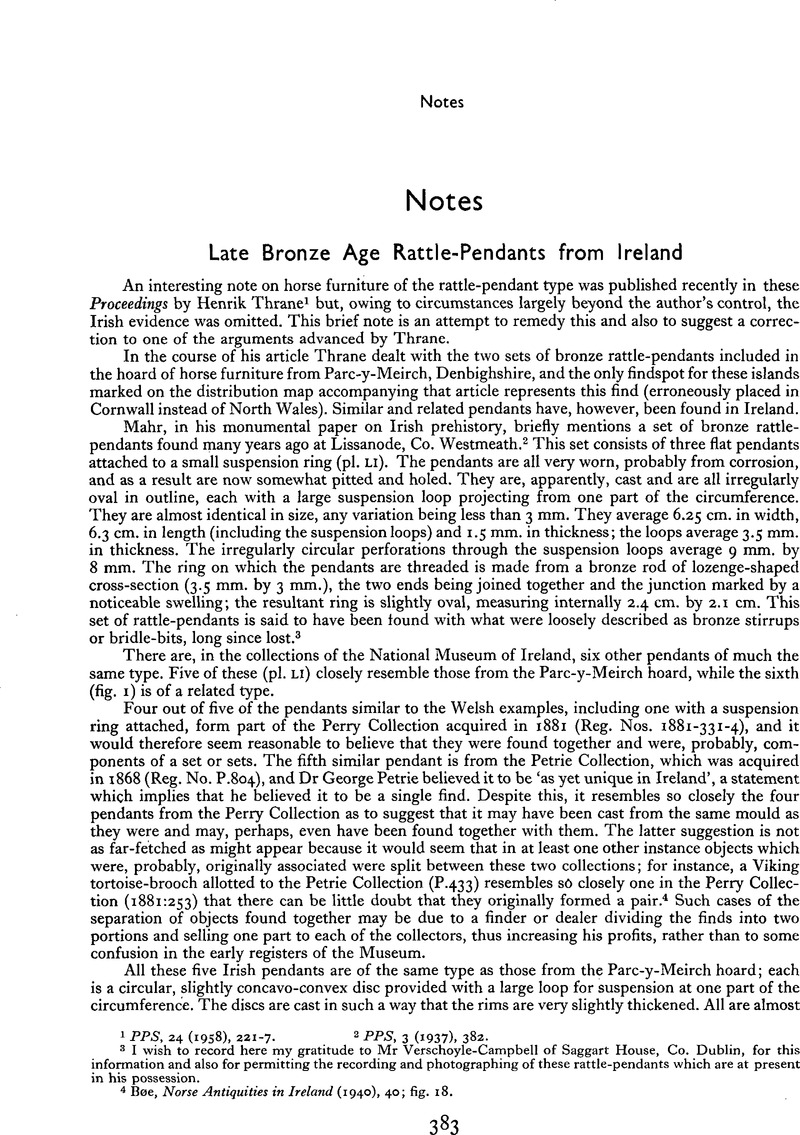Article contents
Late Bronze Age Rattle-Pendants from Ireland
Published online by Cambridge University Press: 27 May 2014
Abstract

- Type
- Notes
- Information
- Copyright
- Copyright © The Prehistoric Society 1962
References
page 383 note 1 PPS, 24 (1958), 221–7Google Scholar.
page 383 note 2 PPS, 3 (1937), 382Google Scholar.
page 383 note 3 I wish to record here my gratitude to Mr Verschoyle-Campbell of Saggart House, Co. Dublin, for this information and also for permitting the recording and photographing of these rattle-pendants which are at present in his possession.
page 383 note 4 Bøe, , Norse Antiquities in Ireland (1940), 40Google Scholar; fig. 18.
page 384 note 1 See Scharff, R. F., Proc. Roy. Ir. Acad., 27B (1909), 81–6Google Scholar, for the suggestion that the Irish horse may be descended from an indigenous wild breed; Miss G. Roche, M.Sc, Natural History Division, National Museum of Ireland, informs me, however, that there is no evidence for a wild horse in Ireland, while the evidence for an early date for horse-bones from Shandon Cave, Co. Waterford, or any Irish cave, is not proven (see Coleman, J. C., Jour. Roy. Soc. Antiq. Ire., 77 (1947), 63–79Google Scholar). But see Coffey, G., Proc. Roy. Ir. Acad., 25C (1904), 14–20Google Scholar, for a possibly Bronze Age horse-burial.
page 385 note 1 Mahr, op. cit., also suggested that ‘the type seems to be of circum-Alpine origin’ and that ‘the “tintinnabula” of the developed Western Hallstatt province show strong affinities with it’.
page 385 note 2 Apparently using the chronological scheme proposed by Piggott, S. in Proc. Soc. Antiq. Scot., 87 (1952–1953), 183Google Scholar, which would therefore indicate a date of about 700–650 B.C.
page 385 note 3 Apparently using the chronological scheme proposed by Hawkes, C. F. C. in PPS, 14 (1948), 216Google Scholar, which would therefore indicate a date of about 600–550 B.C.
page 385 note 4 Antiq. Jour., 37 (1957), 131–98CrossRefGoogle Scholar.
page 385 note 5 Ibid., p. 157 and pp. 186–7. See also Hencken, , Jour. Roy. Soc. Antiq. Ire., 81 (1951), 53–64Google Scholar.
- 2
- Cited by


